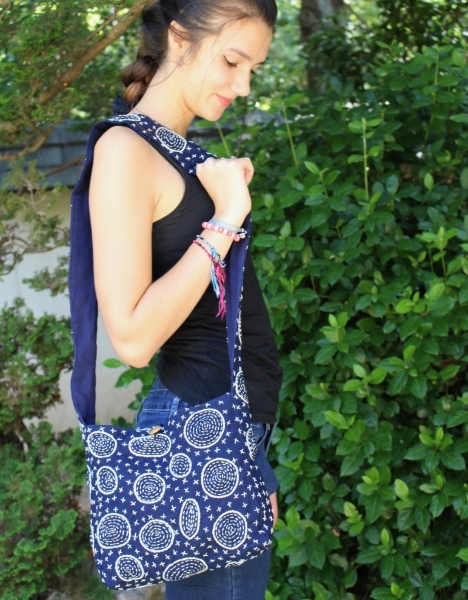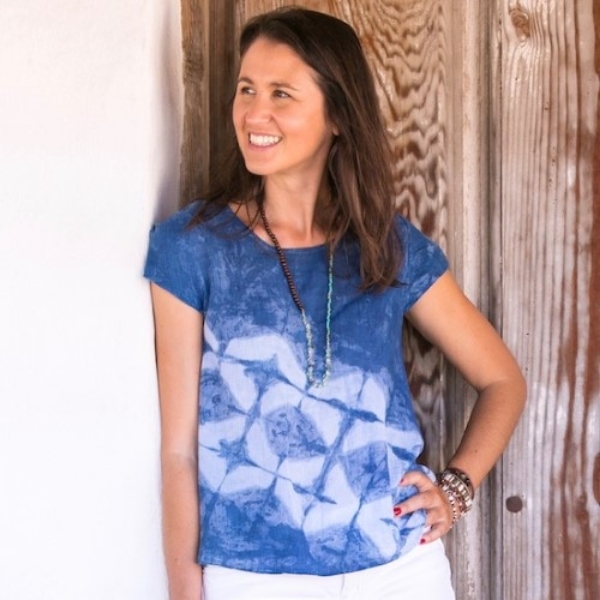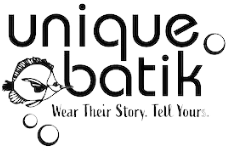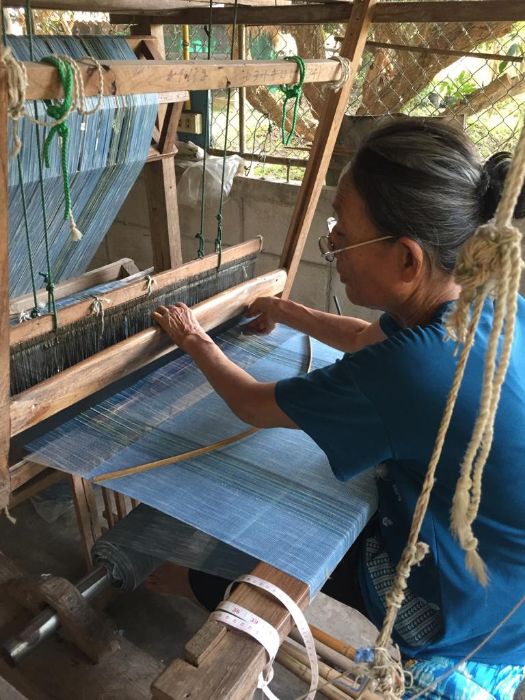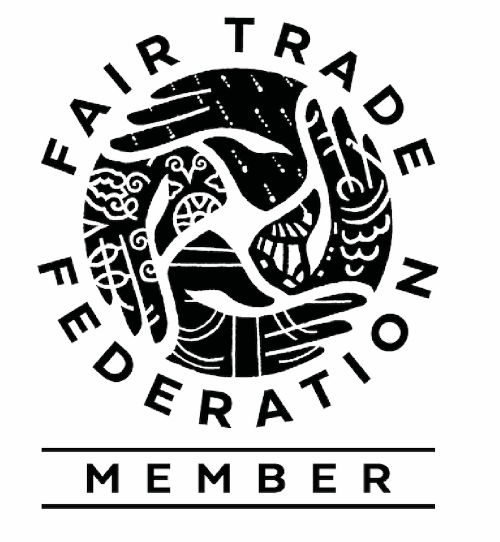Most people love BLUE. Claimed to have soothing effects on humans, the color blue often evokes feelings of peace and tranquility. Blue is also the most common clothing color. Think the ubiquitous blue jean.
Blue Jeans
Genoa, Italy, was known for producing a hard-wearing cotton cloth, which became known as jeane, named for the city. Attempting to replicate this fabric, weavers in Nimes, France, developed a unique and sturdy fabric using a twill weave. They dyed the warp thread blue with indigo and left the waft thread white and called it Serge de Nimes, which became de Nimes and then denim. Read about it here:
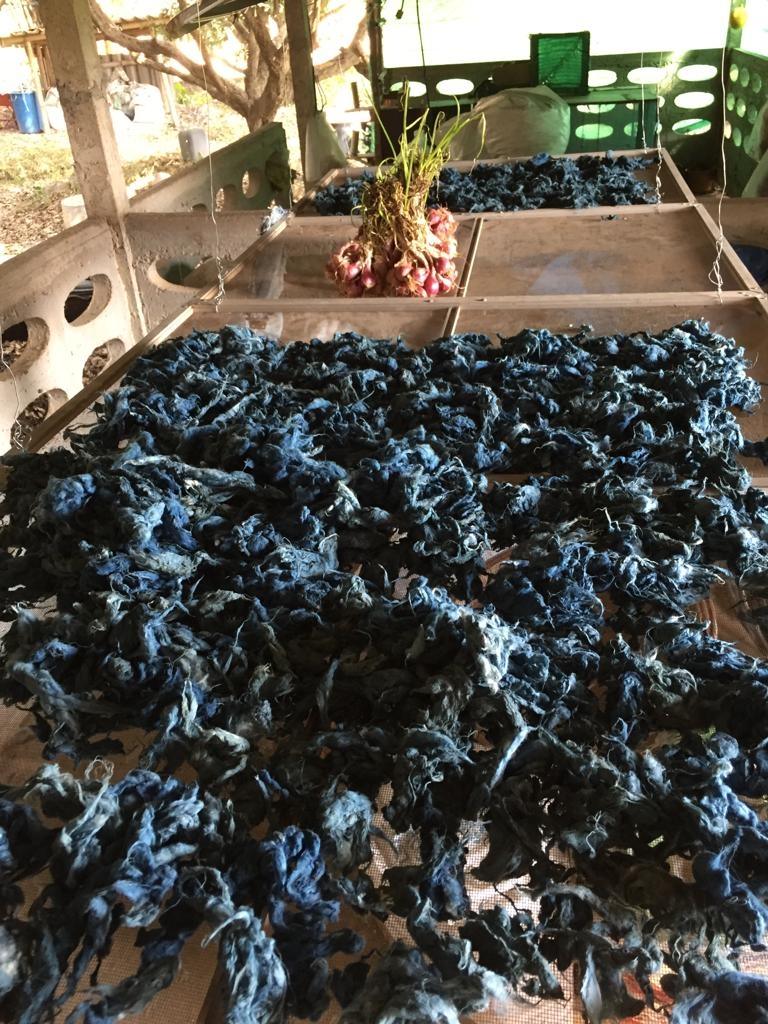
King of dyes
Indigo blue is one of the seven primary colors in the color wheel and the rainbow. Natural indigo dye is an extract from the leaves of Indigofera, a tropical genus. Because the dye acts by attaching and wrapping its molecules to and around each string of fabric, it protects the fabric in a way that makes it last longer. And so they call indigo the King of Dyes.
The name means “from India” since India was the primary supplier to Europe between 30 BC and 400 AD. But the origin of this fascinating natural dye goes back even further in time and to the other side of the world. Archaeologists discovered an indigo-dyed cloth in Peru and dated it at 6,000 years.
Widely used among all the major ancient civilizations in the Americas, the Spanish started exporting Maya Blue in the sixteenth century from the region that is now Guatemala. France and England eventually joined the lucrative trade, and two centuries later, indigo was successfully cultivated in Mexico, Venezuela, and the Caribbean.
Blue Gold
Eliza Lucas Pinckney, born in the Caribbean, was sent to the family’s Charleston plantations as a teenager, along with her mother and sisters. Passionate about and naturally skilled in botany, she started experimenting with indigo cultivation and processing. Persisting for years, despite setbacks and ridicule from her peers, she finally succeeded in growing enough to begin dye production in 1774.
Indigo became a major export crop of the Atlantic economy, its profits fast outnumbering sugar and cotton. The colonists even used indigo dye bars as currency during the Revolutionary War!
The Indigo Girl, by Natasha Boyd, is a delightful re-telling of this remarkable person, the first woman inducted into the South Carolina Business Hall of Fame.
Green leaves to blue dye
Turning leaf into coloring agent is complicated, involving many chemical reactions. The green basil-like leaves are immediately submerged in water after being harvested, to initiate fermentation. They are left to soak for at least a day, after which the leaves are removed and used as a rich nitrogen fertilizer. The liquid in the tank is still lemon green with a purple-blue floating froth. Vigorous whisking for an hour oxidizes the water. Only during this phase does the green water turn reddish blue. Skilled artisans often taste the brew, ascertaining its potency and readiness. The final product, dye cakes or powder, is achieved after several additional processes. Indigo in this format is what a fabric dyer uses, adding only water and a reducing agent such as natural fructose or chemicals.
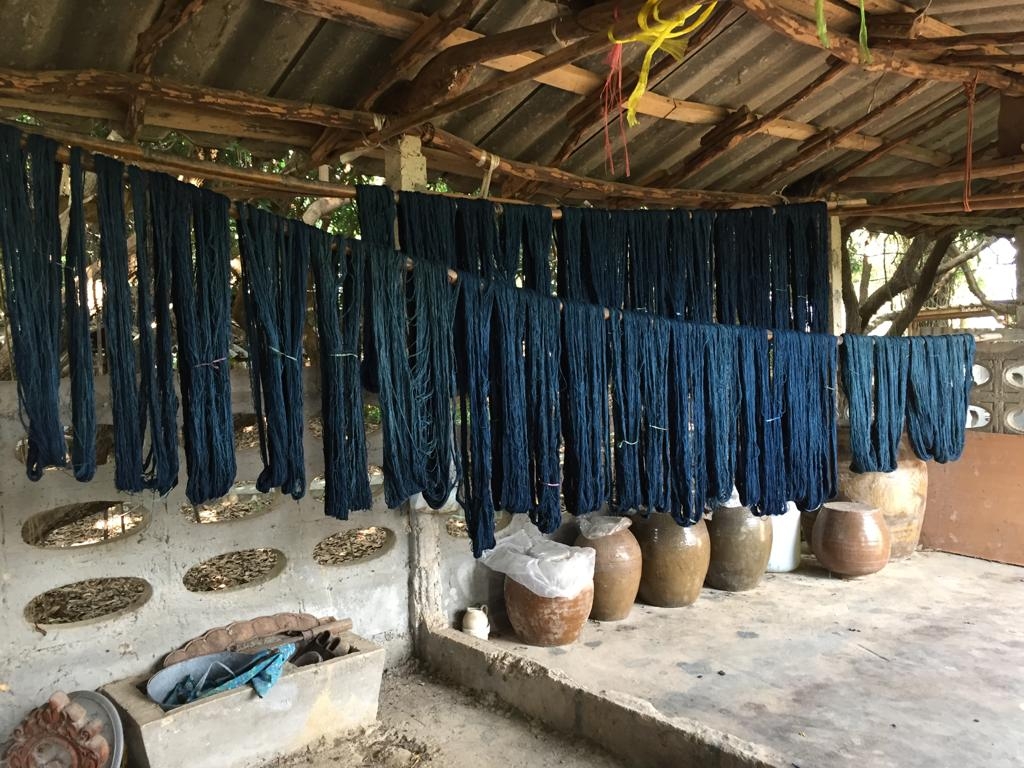
We source indigo-dyed products from Thailand, where traditional indigo dyeing has been going on for generations. The Indigofera plant is called hom in Thai. The women artisans of northern Thailand demonstrate an unusual emotional relationship with their dye vats. They believe their brews are alive, of “having souls” needing loving care beyond maintaining the chemical balance. They often sing to their vats as they “feed” them, and the vats are kept alive by vigilant care and supervision.
The Thai dye never dies.
Links to more:
The rich indigo tradition in India: India's Blue Gold
For more about Thailand's indigo Guardians: Culture Trip
Curious to try your hand at dying with indigo: Banana Vat Dye
Shop at Unique Batik for featured indigo wear this month:
